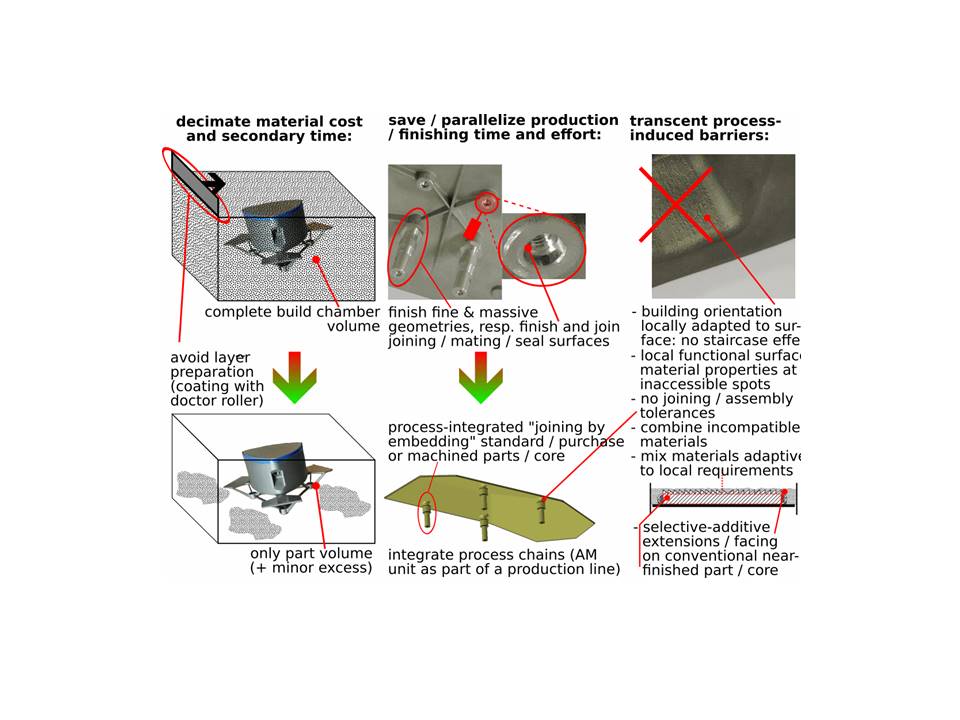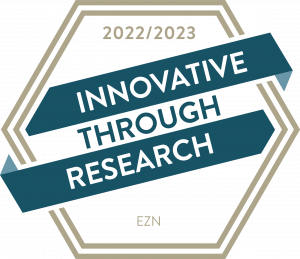Additive manufacturing (3D printing) of components with inserts
// Machine and Plant Construction // Mechanical Engineering // Production Technology
Ref-Nr: 16556
Abstract
The aim of the new technology is to integrate prefabricated elements or inserts (e.g. purchased parts, machined parts, solid bodies) with 34 combinable, innovative approaches to additively manufactured elements, to reduce the influence of the assembly direction and to enable new material combinations.background
Additive manufacturing processes are increasingly being used productively due to their new design possibilities. These include, for example, layer-by-layer construction with a print head or powder-based processes.
Motivation
The integration of prefabricated components, the use of materials in different layer angles (e.g. from the side) or around embedded components is not yet possible. The quality of geometries and surfaces is limited and depends on the installation direction, which must be uniformly defined for the entire component.Innovation / Solution
The new technology should make it possible for the first time to connect, embed or apply separately manufactured components or inserts (e.g. purchased parts or previously machined or additive elements) to the rest of the body. The main advantage is that the positive properties of indexable inserts achieved by other manufacturing processes can also be used in additive components. While additive manufacturing has so far been regarded primarily as a part manufacturing process, the principle of "assembly and connection technology" for microelectronic and microsystem housings is to be transferred to large assemblies using the new invention-oriented process.Benefits
Additive production can be linked to integrated process chains.
Breaking through common process limits in terms of production time and effort: The complex layer structure of simple/massive surfaces is replaced by inexpensive purchased parts as well as conventionally and parallel produced semi-finished products.
The need for cost-determining special powder is reduced to a fraction: Instead of filling the entire machine work area with powder bath, only the production quantity for the finished part is required (fewer material areas to be replaced by inserts/cores).
Downtimes due to coating preparation (squeegee) are eliminated.
Integration of the advantages/properties of components manufactured with different manufacturing processes (e.g. by machining) into components manufactured with additives.
Better mechanical properties, surface qualities and tolerances.
Increased design variety.
New material combinations.
fields of application
The field of application of the new technology is the production of components with additive processes.You can close this window. You can find your search results in the previous window





